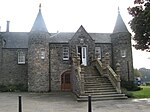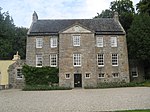Battle of Inverurie (1308)
The Battle of Inverurie, also known as the Battle of Barra, was fought in the north-east of Scotland and was a victory for the Scottish king Robert Bruce over his chief domestic enemy, John Comyn, 3rd Earl of Buchan. Though part of the wider Wars of Scottish Independence, it is more properly viewed as an episode in a brief but bitter civil war. It was followed by the Harrying of Buchan, a violent act of destruction of property long remembered with bitterness in Buchan. The battle was fought in May 1308 according to Fordun. However, Barbour states clearly that it was fought at Christmas of 1307. Many current historians accept Fordun's date, but Barron and some others believe that Bower misinterpreted Fordun's notes. The battlefield was added to the Inventory of Historic Battlefields in Scotland in 2011.
Excerpt from the Wikipedia article Battle of Inverurie (1308) (License: CC BY-SA 3.0, Authors).Battle of Inverurie (1308)
Kirk Street,
Geographical coordinates (GPS) Address Nearby Places Show on map
Geographical coordinates (GPS)
| Latitude | Longitude |
|---|---|
| N 57.335 ° | E -2.318 ° |
Address
Kirk Street
Kirk Street
AB51 0DF
Scotland, United Kingdom
Open on Google Maps







